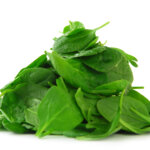All about iron

As the summer draws to a close, I can feel the first signs of autumn in the air. We managed to soak up some final doses of vitamin D cycling along the Grand Union Canal in the glorious bank holiday sunshine. Despite the heat, the dapples of shade and flat paths made it a wonderful way to enjoy our beautiful surroundings.
A new season is always a great time for a health check. How are you feeling? Are you rested and revived after the summer break, or are you feeling unusually tired, lacking in energy or short of breath? This month is all about iron; what a deficiency feels like, possible causes and how to make sure you’re getting enough.
What does iron do?
The majority of your body’s iron levels are found in your blood. Iron is vital for maintaining healthy red blood cells and producing haemoglobin, the protein which helps the red blood cells carry oxygen around the body. A deficiency slows down this process, so your tissues and muscles won’t get the oxygen they need to work effectively. Iron is also an essential mineral for the nervous system and brain function.
Iron-rich foods
There are two different forms of iron: heme iron is found in red meat, liver, shellfish (such as oysters, clams and mussels), sardines, poultry and egg yolks. Non-heme iron is found in plant foods including green peas, dark green leafy vegetables, alfalfa, broccoli, seeds, beans, lentils and molasses.
Iron absorption
Iron is absorbed in the upper part of the small intestine, usually within four hours of eating. Minerals are not as easily absorbed as most vitamins, so this can be one of the main causes of a deficiency (known as anaemia). Additionally, minerals can have a low bioavailability, which means that even if you’re eating what you need, your body may not be able to fully utilise it.
The body absorbs heme iron (the meat variety) more easily than non-heme iron (the plant variety). To add to the problem, some plants contain oxalates (chocolate, coffee and spinach) and phytate/phytic acid (beans, grains, nuts and seeds). Also known as anti-nutrients, oxalates and phytates bind to iron and other minerals, reducing their absorption. On the contrary, vitamin C helps with absorption by capturing the non-heme iron and storing it in a form that the body can benefit from.
A high intake of calcium can also interfere with iron absorption, so consuming large quantities of dairy could reduce your iron levels (children who drink lots of milk could be prone).
Some medications, including antacids that relieve heartburn and indigestion by reducing stomach (hydrochloric) acid, will also have an impact. Stomach acid regulates the absorption of iron in food.
Aside from absorption, what else could cause an iron deficiency?
- Your diet – vegetarians and vegans are thought to be at particular risk, as they miss out on the heme iron found in meat, poultry and shellfish.
- Children who are picky eaters.
- Women who experience heavy periods.
- Breastfeeding women.
- Post-operation.
Spot the signs
For some people, the first symptoms of an iron deficiency are associated with the nervous system and include brain fog, restless legs, cognitive problems and a lower IQ. Children could experience some developmental delays. However, the most common symptoms include:
- Unusual tiredness – This is the main one to look out for.
- Lack of energy– If you have thyroid problems, it’s worth checking your iron levels with your doctor, as iron is needed to convert the inactive thyroid T4 (thyroxine) into its active T3 (triiodothyronine).
- Breathlessness/shortness of breath– As your body struggles to carry oxygen around the body, your breathing rate increases to try and get more.
- Heart palpitations/higher than usual heart rate– Your heart needs to work extra hard to carry more oxygen around the body.
- Dizziness/feeling light-headed– This is due to a shortage of oxygen reaching the brain.
- Pale skin, pale gums or pale colouring on the inside of lower eyelids – I remember my mother checking the inside of my eyelids as a child for pale colouring, as this was a sure sign of a deficiency.
- Tinnitus (ringing in the ears).
Balance your iron levels
Also known as the goldilocks mineral, iron should be consumed in just the right quantity. As much as you don’t want to be deficient, too much can lead to joint and hormonal problems.
- For general health, eat iron-rich foods as part of a balanced diet.
- If you are already taking iron supplements, avoid eating dairy or taking any medications at the same time. Vitamin C will help absorption so take with a glass of orange juice.
- Consider taking a digestive enzyme if you suffer from heartburn/indigestion. I can advise on this.
- Chew your food well to help with digestion.
- If you are a vegan/vegetarian, make sure you eat plenty of the iron-rich foods available to you. If you’re feeling unusually tired, your doctor will check your iron levels.
- Book an appointment to come and see me if you think you might be deficient. I can establish the reasons behind your deficiency and if/why you’re having problems with absorption.
